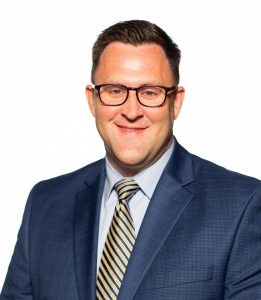 This article first appeared in the American College Application Campaign’s October 2021 newsletter.
This article first appeared in the American College Application Campaign’s October 2021 newsletter.
How many times have you read an article or heard a story about our “new normal?” If it feels like a lot, you’re not alone. Google trends from the past five years show the topic has seen consistently higher interest since March 2020.
It’s hard to believe, but this is the third cohort of seniors navigating the COVID-19 pandemic, which means as educators we are also navigating our third “new normal” in as many school years. The first came in the latter half of the 2019-20 school year, with mass virtual learning. The second in 2020-21 was characterized by various iterations of virtual, hybrid, and, in some cases, in-person learning. And here we are a couple of months into 2021-22 charting our way through the current “new normal,” still not completely certain of what lies ahead.
The Kids Are Not Alright…And Neither Are the Adults
The toll on students from these “new normals” has been well documented. In June 2021, the Education Department’s Office for Civil Rights published a report stating, “Emerging evidence shows that the pandemic has negatively affected academic growth, widening pre-existing disparities . . . Nearly all students have experienced some challenges to their mental health and well-being.”
But what about the effect on educators? Until recently, little was known about the ways COVID-19 has affected educators, particularly school counselors. But according to a recent paper, authored by researchers from Harvard University and Boston College, educators have faced substantial obstacles carrying out their responsibilities. As noted in the report, school counselors “…received limited direction and guidance, were rarely asked for input into school planning, and their professional development needs went unmet. Together, these challenges left counselors feeling unsupported and challenged to fulfill their counseling roles.”
Counselors have long been asked to perform non-counseling duties such as tracking attendance and filling in for absent teachers. But amidst the pandemic, role ambiguity has deepened with counselors reporting instances of being asked to coordinate technological device drop-offs, implementing new grading policies, and even doing temperature checks.
Participants reported that communication from school leaders has focused primarily on school operations and instructional plans with no direction for counselors. This has left many feeling forgotten with little information about how their roles would shift and on their own to articulate their roles. Most of the study’s 1,060 participants disagreed or strongly disagreed their leaders provided clear direction about the scope of the role (55 percent) in the early months of the pandemic.
Around 43 percent of counselors reported spending less time doing 1:1 counseling, in many cases due to school policy barriers eliminating all 1:1 and/or group counseling sessions. In instances where 1:1 counseling occurred, high school counselors reported a substantial decrease in the amount of time spent on career counseling, “with nearly half of counselors (48 percent) noting that they spent less time on [career counseling] in the months after the onset of COVID-19.”
Asset-Based Advocacy
In sum, at a time when students have needed the most support, counselors have struggled to realize their professional roles and have faced barriers severely limiting their focus on students’ academic, social-emotional, and postsecondary development. Our students need us to be at our best, and sometimes that means we need to “manage up” not only for our own self-interest, but in the best interests of the students we serve. Here are a few asset-based steps counselors and other educators can take to advocate for the enabling conditions to support a comprehensive counseling program:
- Embrace Autonomy. Though limited communication from school leadership can be frustrating, it can also be an opportunity to practice independent decision-making. As noted in the research paper, “Counselors…leveraged this autonomy to enact their roles by creatively working around school-based policies and constraints. For example, one counselor delivered journals to students’ homes to navigate a no-home-visits policy, while others collaborated with teachers in an ad-hoc manner. For many of the participants, this meant calling on personal relationships with teachers whom they felt would give them access to classrooms.”
- Embrace Community. In the absence of district-mandated or district-supported professional development, take advantage of professional organizations like the American College Application Campaign, myOptions, the National Association for College Admission Counseling (NACAC), and the American School Counselor Association (ASCA), which provide free resources, tools, webinars, and other virtual pieces of training to learn from colleagues navigating similar challenges.
- Seek Role Clarity. In the Report’s closing, the authors urged school leaders to “…clarify job expectations, protect counselors’ time spent directly with students delivering counseling . . . Clear plans for counselors’ roles are needed to help students and the school community heal and recover from the disruption in schooling.” Consider sharing ASCA’s “Appropriate and Inappropriate Activities for School Counselors” as a launching point for establishing clear boundaries and expectations to support student development and success.
